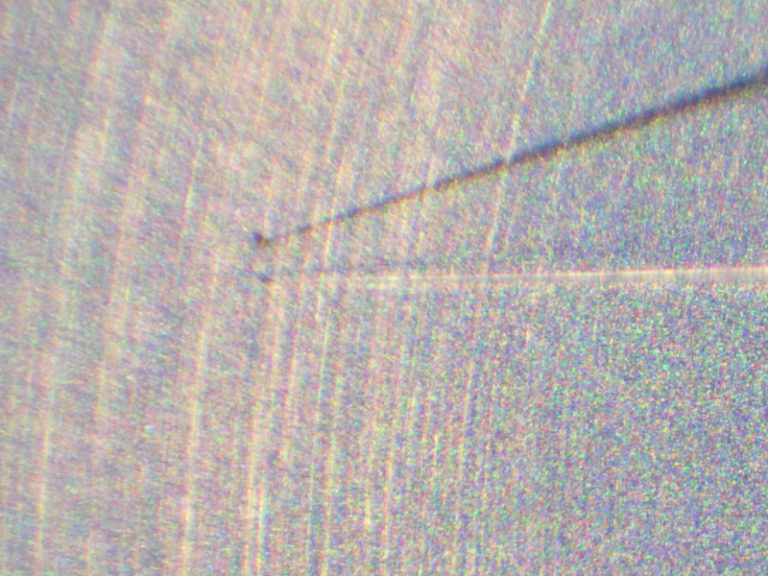Emily Lakdawalla • Jul 06, 2010
A look inside the Hayabusa sample capsule
A very brief item posted on the Hayabusa website yesterday included two pictures of the interior of its sample return capsule, one of which shows a particle; but it's impossible to know for sure at this early stage of the investigation whether that particle is, against all odds, the first known piece of an asteroid returned to Earth by a spacecraft, or if the particle is of Earthly origin. (UPDATE 19:09 PDT: There's now an English language version of the update posted on the JAXA website.)
Here's a look inside the capsule. I'm amazed at how pristine it appears -- but then if it didn't look pristine (meaning it was perfectly protected against contamination), the odds of locating any Itokawa particles would be slim.

Here is a photo taken through a microscope of a manipulating needle pointing to the minuscule dark particle.

There was evidently a press briefing yesterday about what has been found so far, but no detailed press release from JAXA in either Japanese or English. So the rest of the information available on what they saw inside the capsule is only to be found in Japanese media reports, and they are contradictory. Here is one small snippet of a television report on the briefing, in Japanese of course. Unmannedspaceflight.com member "pandaneko" helpfully explained what the TV hostess is saying: "She is saying two things. First, 0.01-millimeter grains were found inside the tube." That, presumably, is the size of the thing being pointed to by the needle in the image above. "Second, 1-millimeter size grains, about a dozen of them, were found on the outside of the inner tube." These grains are likely of Earth origin, but there remains a possibility that they came from Itokawa.
We'll have to be patient while the scientists -- both from JAXA and from other agencies, who will be given samples for testing -- try to figure out where these particles came from. Some of you may be wondering how it's possible to perform analyses on particles only a hundredth of a millimeter in diameter, but one thing I learned by attending conferences on results from the Stardust mission is that such tiny particles are no problem with current analysis techniques. So stay tuned for results from Hayabusa!
The Time is Now.
As a Planetary Defender, you’re part of our mission to decrease the risk of Earth being hit by an asteroid or comet.
Donate Today

 Explore Worlds
Explore Worlds Find Life
Find Life Defend Earth
Defend Earth

